
NATO-style army: where Ukrainian soldiers are trained
As the war with Russia escalated, Ukraine's allies are extending support beyond weapons and finances. They are actively involved in training our military personnel on their own grounds, adhering to NATO standards
Espreso delves into the specifics of how Ukrainian soldiers are being trained abroad and explains why this is important.
Key points covered:
- Ukrainian military training aligned with NATO standards until February 24th.
- Countries where Armed Forces personnel have been trained post-February 24th.
- European Union nations collectively trained over 34,000 Ukrainian military personnel in the past year.
- Great Britain conducted training for an impressive 30,000 Ukrainian soldiers.
- Poland's capacity to simultaneously train two battalions of the Armed Forces every month.
- Germany emerges as the leading EU country in training Ukrainian military personnel, with around 10,000 soldiers trained.
- French contribution in training approximately 7,000 soldiers, with plans to involve private companies.
- Spain's completion of courses for 4,000 Ukrainian soldiers.
- The Czech Republic's training of 4,000 Ukrainian soldiers.
- The United States conducted training for approximately 20,000 Ukrainian soldiers.
Training the Ukrainian military following NATO standards until February 24
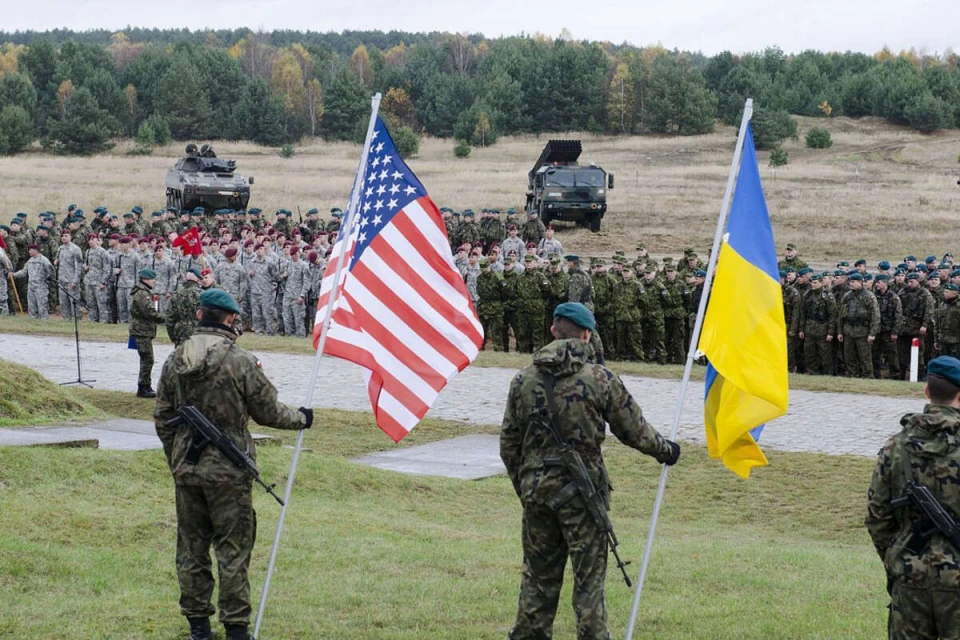
Photo: Ukrainian Armed Forces General Staff
Before the large-scale war with Russia, Ukrainian soldiers routinely underwent training both domestically and abroad, often with NATO instructors. This collaboration intensified following Russia's illegal annexation of Crimea and the initiation of military aggression in eastern Ukraine.
One notable initiative was Operation Orbital, a joint effort by the Armed Forces of Great Britain and Ukraine. Between 2014 and 2022, British instructors successfully trained over 22,000 Ukrainian servicemen in various skills crucial for safeguarding the country's territorial integrity. In the summer of 2022, the training relocated to Great Britain, with military personnel from New Zealand, the Netherlands, Canada, and other nations joining British instructors.
Operation Unifier, managed by the Canadian Armed Forces, was part of a multinational joint commission that included the United States, Great Britain, Canada, Sweden, Poland, Lithuania, and Denmark. This operation aimed to reform the Ukrainian army before the outbreak of full-scale war. Approximately 200 Canadian soldiers, rotating every six months, were stationed at the International Peacekeeping and Security Center in the Lviv region. By the end of 2018, over 10,000 Ukrainian soldiers had undergone training through this Canadian Armed Forces operation.
Various educational programs from the USA, Lithuania, Latvia, and Estonia were also held. Additionally, the Armed Forces of Ukraine regularly conducted joint training exercises, such as the Sea Breeze at sea and Rapid Trident on land (mainly at the Yavoriv military training ground). These activities fell under the "Partnership for Peace" program, involving military personnel from NATO countries, along with several other specialized projects, including DEEP. DEEP aimed to enhance the compatibility of Ukrainian soldiers' education with NATO standards. Over ten years, more than 12,000 Ukrainian soldiers, primarily teachers, completed relevant theoretical courses.
In essence, the Armed Forces clearly pursued a path to enhance the military to NATO standards to eventually join the Alliance. This aligns with the course set in the Ukrainian Constitution a few years ago, emphasizing Euro-Atlantic integration. Hence, the Ukrainian military actively participated in NATO training programs.
Which countries train Ukrainian Armed Forces soldiers post-February 2022?
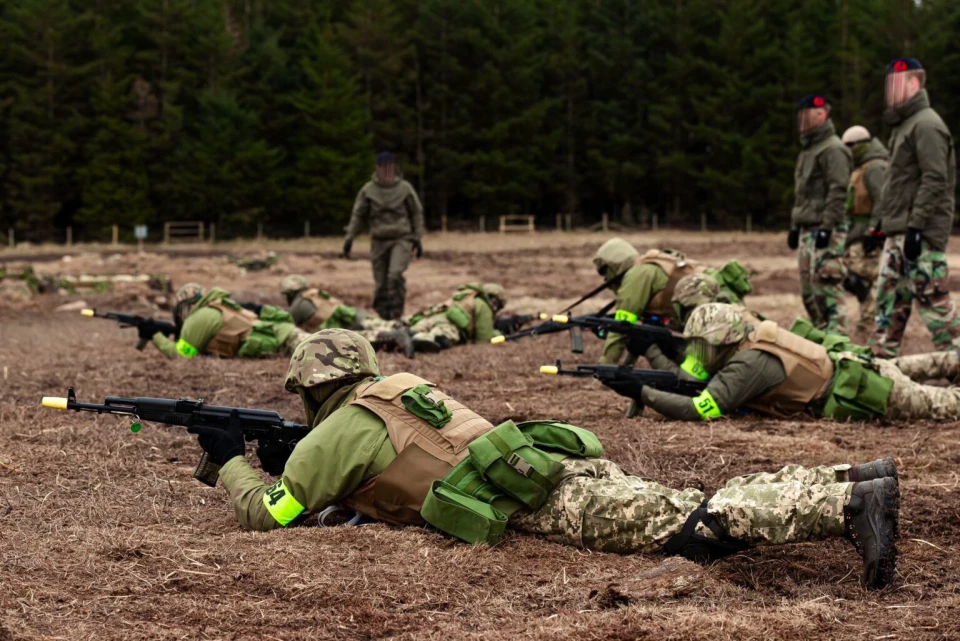
Photo: ArmyInform
Following the outbreak of a full-scale war, there arose a pressing need to expand existing and establish new training programs for Ukrainian soldiers. Despite global reluctance to send troops, fearing potential escalation to a nuclear conflict with Russia, Ukraine's allies stepped up by providing training facilities for Ukrainian defenders. These include both new volunteers and those mobilized on a planned basis, as well as experienced military personnel adapting to the latest equipment.
During martial law, men aged 18 to 60, both with and without military experience, can be mobilized. Those with combat experience or prior service are deployed to the frontlines, while those without experience undergo 1 to 3 months of basic training in specialized units. Since last summer, there has been a significant increase in sending mobilized individuals for training abroad, complementing activities at Ukrainian military bases.
Key countries, involved in training our soldiers include Great Britain, Germany, Poland, the USA, France, Spain, and the Czech Republic. While these nations are emphasized, the actual list of countries where Ukrainian soldiers undergo relevant courses spans about three dozen countries. Many EU member states have offered opportunities for Ukrainian military personnel to learn military practices aligned with NATO standards. In most cases, this training focuses on professional development related to the use of new military equipment or specialized skills. For instance, Ukrainian artillerymen were trained in Denmark to operate Caesar self-propelled artillery installations.
In 2022, over 20,000 Ukrainian military personnel from the Armed Forces underwent training in 17 allied countries. About half of them specialized in narrow fields such as sappers, medics, divers, and scouts, while the other half comprised regular soldiers and stormtroopers. Fast forward to 2023, and this number has surged to approximately 80,000 individuals. Overall, more than 100,000 Ukrainian servicemen have, since the onset of full-scale war, spent several weeks honing their skills and mastering new weapons at NATO military bases abroad. In late November, Major General Oleksandr Kyrylenko, Deputy Chief of the General Staff of the Armed Forces of Ukraine, revealed that over 100,000 servicemen had been trained by Ukrainian partners in less than two years.
Major General Oleksiy Taran highlighted that the current training system revolves around four main priorities:
- Providing basic military training for newly recruited individuals transitioning from civilian life.
- Offering professional training, especially for foreign models of weapons and military equipment, as well as specialists in critical roles like combat medics, sappers, snipers, and anti-tank system operators.
- Focusing on the training of modern commanders-leaders, particularly junior leaders responsible for departments, platoons, companies, and tactical instruction.
- Conducting collective training for units at various levels and headquarters to ensure effective management, with a primary emphasis on offensive and assault operations.
Great Britain: more than 30,000 Ukrainian soldiers underwent training
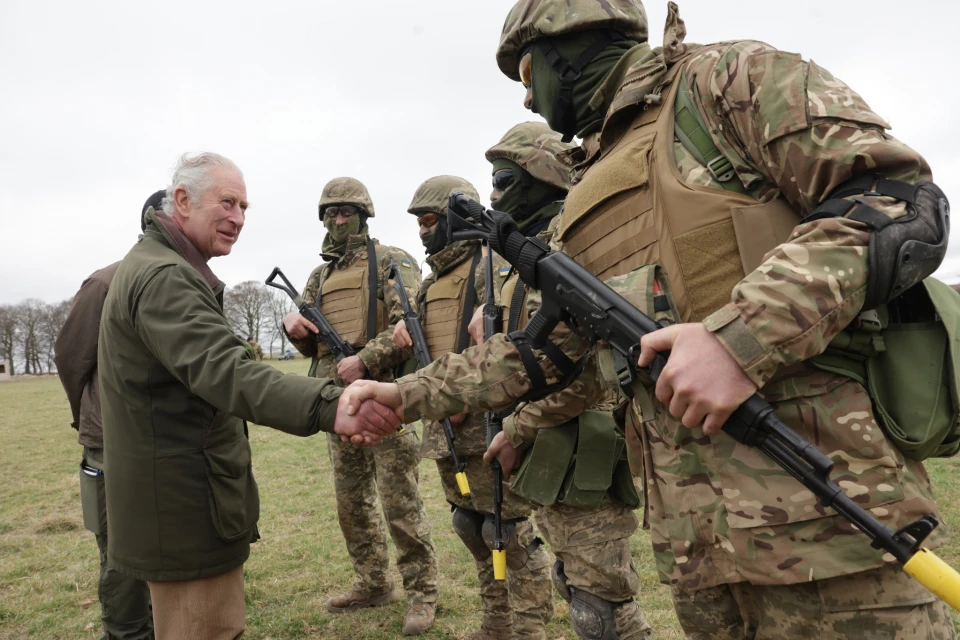
Photo: Ukrainian Armed Forces General Staff
In June 2022, Great Britain introduced a new initiative named "Operation Interflex," aiming to train over 30,000 Ukrainian soldiers in line with the infantry standards of the Royal Armed Forces of Great Britain.
This program is designed for individuals with minimal or no military background and has been condensed to accommodate a large number of Ukrainian participants. The five-week course prioritizes fundamental skills crucial for survival and combat readiness. Training modules cover areas such as weapon handling, marksmanship, tactics, patrolling, rural and urban combat, position clearing, explosives and mine clearance, basic cyber security, first aid, laws, customs of war, and more.
Conducted at training bases in Yorkshire, Kent, Wiltshire, and Northumberland, the conditions simulate the combat theater in eastern Ukraine. Specifically procured AK-type assault rifles, akin to those used by Ukrainian forces, are utilized. The training involves mock scenarios with military personnel from participating countries acting as adversaries. Additionally, soldiers learn to operate the weapons provided by the British, and proficient graduates can pursue advanced training in managing specific combat equipment, such as Challenger II tanks.
Soldiers from the ground forces, along with Navy divers and explosives experts, receive training in the UK under the guidance of Royal Navy counterparts. The Ukrainian military also benefits from the loan of minesweepers by His Majesty's government for Black Sea demining. However, these vessels are currently docked in British ports because the Montreux Convention prohibits the passage of warships from conflicting nations through Turkey.
"We typically worked six days a week, from morning until 8 p.m. Our training involved full gear and assault rifles. We practiced maneuvers in mined areas, urban combat, and personnel management throughout the day," shared a representative from one of the amphibious assault units with ArmyInform.
The General Staff reports that half of those returning from overseas training become riflemen for subsequent battles. Meanwhile, the remaining personnel gain expertise in specialized roles like gunner-operators, mechanic-drivers, and machine gunners. It's worth noting that not only Ukrainian soldiers but also our instructors receive training in Great Britain.
Apart from around a thousand mentors from Great Britain, there are hundreds of military experts from various nations, including Denmark, Sweden, Canada, Australia, Norway, Romania, New Zealand, Lithuania, Finland, and the Netherlands.
Between last summer and this winter, over 30,000 Ukrainian military personnel underwent training in Great Britain under this program. This diverse group includes gunners, marines, engineers, combat medics, and more. Considering the target of 22,000 by 2022, the British Armed Forces have sponsored the training of over 52,000 Ukrainian soldiers.
It's important to highlight that in late September, the United Kingdom began exploring the option of deploying British military instructors directly to Ukraine.
EU countries trained over 34,000 Ukrainian military personnel this year
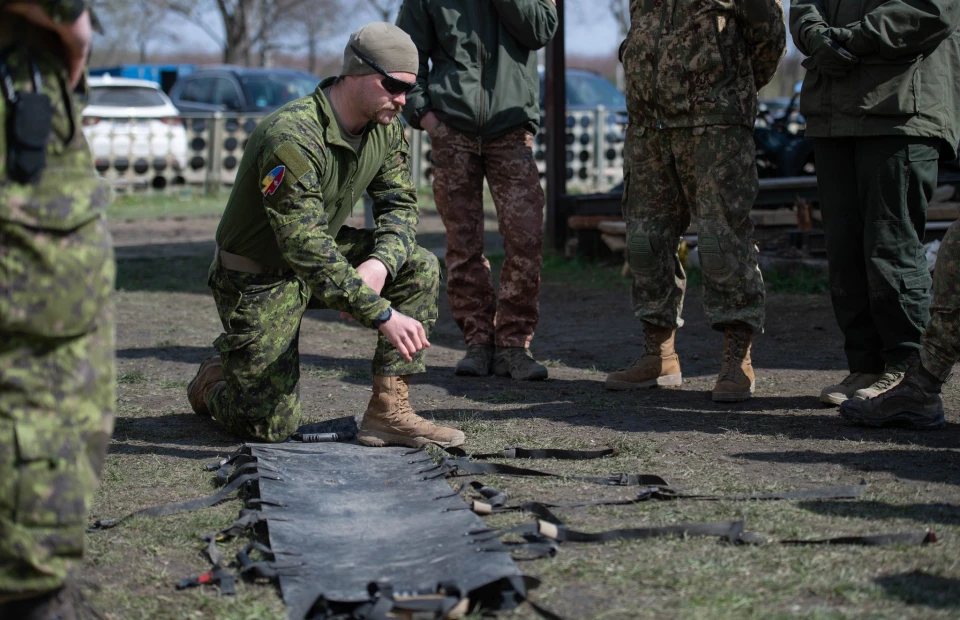
Photo: Ukrainian Armed Forces General Staff
Last fall, the EU approved a new training mission for the Ukrainian army, known as EUMAM Ukraine. Initially, reports indicated that EU countries would assist in training over 15,000 soldiers. However, this number doubled, reaching more than 34,000 by year-end. Training took place across various EU member states, marking the most extensive mission for Ukrainian military training.
Training sessions were conducted in multiple EU nations, with Poland and Germany hosting the majority of Ukrainian servicemen. Instructors from various EU countries, including 24 out of 27 bloc members and Norway, participated.
Throughout the year, the EU invested 60 million euros in these exercises. Additionally, individual EU governments provided separate funding. In late November, the EU Council agreed to allocate an extra 194 million euros for the EU Military Assistance Mission in Ukraine. Consequently, this large-scale mission will continue next year, enabling thousands of new Ukrainian soldiers to undergo training in EU countries.
Poland can train two battalions of the Armed Forces every month
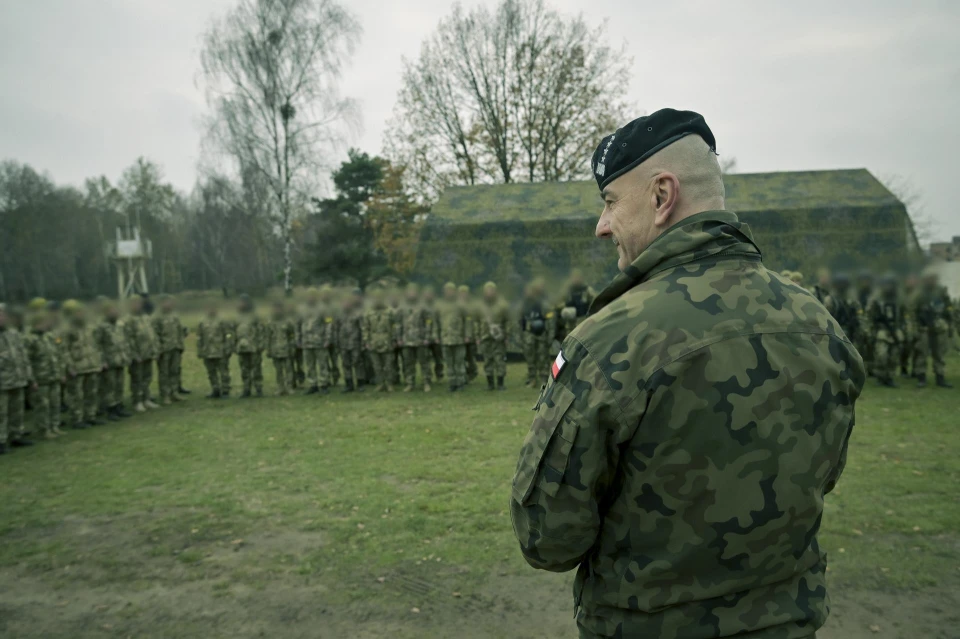
Photo: Ukrainian Armed Forces General Staff
During the full-scale war, Poland emerged as a crucial ally for Ukraine in countering Russian aggression. Apart from hosting millions of refugees, Poland promptly supplied hundreds of Soviet tanks and other essential military gear. Furthermore, they opened their doors to Ukrainian military personnel, receiving instruction from Polish trainers in combat fundamentals and equipment management.
Early this year, Polish Deputy Defense Minister Wojciech Skurkiewicz announced the country's plan to conduct monthly military training for two battalions of the Armed Forces of Ukraine within the EU EUMAM mission. This means the Poles can train approximately 1,000 Ukrainian soldiers each month on average.
Ukrainian troops undergo training at the headquarters of the 11th Lubuska Armored Division in western Poland. Besides basic military skills, Poland provides specialized combat medical training. Additionally, Poland stands out as the first country where Ukrainians learn to operate German Leopard 2 tanks.
According to a Reuters report on the training of Ukrainian attack aircraft, one military officer stated, "Most people lack military experience, and they are taught basic tactical techniques, including weapon use in urban and trench settings."
It's noteworthy that Ukrainian training in Poland involves not only Polish instructors but also those from other countries like Canada, who educate Ukrainian servicemen on overcoming mine threats on the battlefield.
Germany leads the EU in training the Ukrainian military, with approximately 10,000 soldiers benefitting from the program
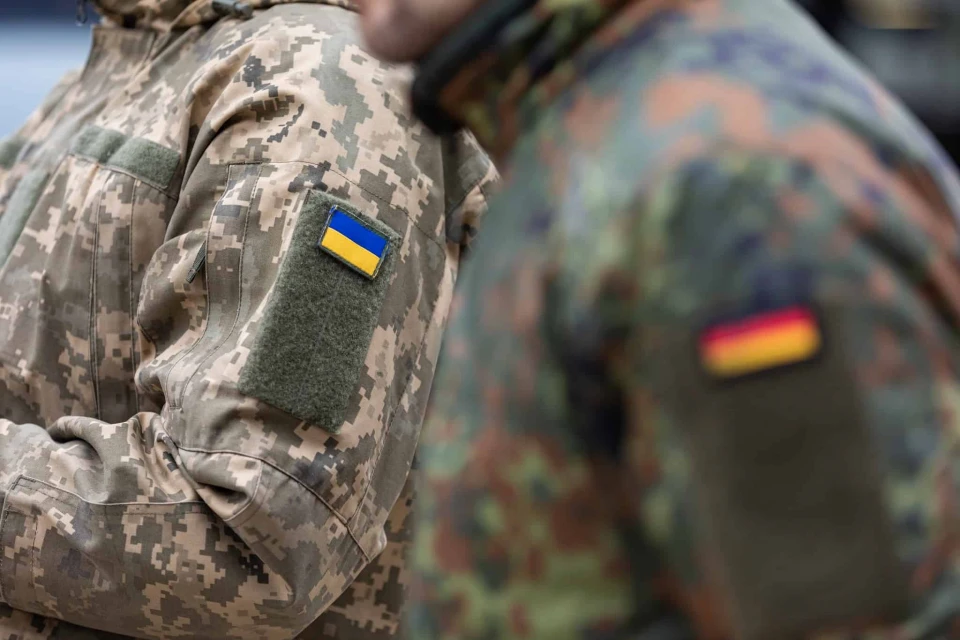
Photo: Ukrainian Armed Forces General Staff
Since the end of last year, Germany has been actively engaged in the multinational training program for the Ukrainian military, part of the European Training Mission (EUMAM Ukraine). This mission covers essential skills such as weapon handling, marksmanship, medical and engineering training, and collective unit training at various levels. The training program has been tailored to meet the specific needs of the Ukrainian Armed Forces.
In April of this year, German Defense Minister Boris Pistorius highlighted Germany's leadership role in training Ukrainian soldiers within the EU. Germany, following the United States, stands as the second-largest provider of aid to Ukraine.
The German minister shared, "By the year's end, over 9,000 soldiers will have undergone training in Germany, solidifying its position as the leading EU country in training the Ukrainian military."
In July, the Bundeswehr reported training around 5,000 Ukrainian soldiers, a number that rose to over 8,000 by early November. Despite earlier estimates in September, assuring a total of 10,000 trained soldiers by year-end, progress continues toward achieving this goal.
Alongside basic training, many Ukrainian soldiers in Germany underwent specialized training focused on mastering and using weapons provided by the Allies. Notably, they received instruction on operating German Leopard 2 battle tanks, which were long agreed upon for supply to the Armed Forces. The primary training site for this was the tank troops school in Münster, Lower Saxony.
Moreover, Ukrainian military personnel at the German base in Klitz were trained in the operation of Leopard 1A5 tanks and Marder 1A3 infantry fighting vehicles. This summer in Germany, Ukrainian forces also underwent a 10-week training course on American Abrams tanks.
Critical to safeguarding Ukrainian infrastructure is expertise in air defense systems, particularly the operation of the Patriot air defense system. This year, the Bundeswehr conducted training for two groups of Ukrainian soldiers, totaling around 150 individuals. The training spanned over six weeks at an air force base in Germany, the specific location of which has not been publicly disclosed.
France has trained around 7,000 soldiers and aims to engage private companies in the process
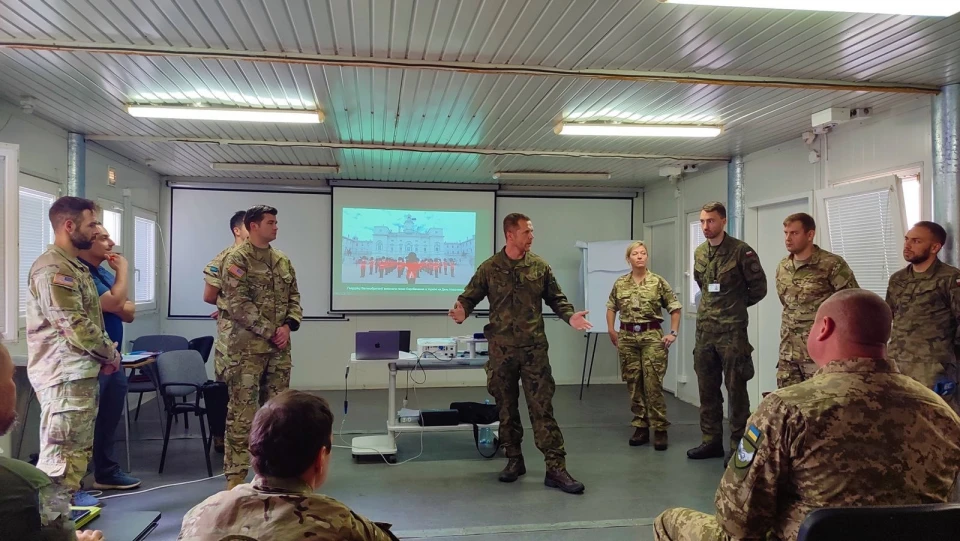
Photo: Ukrainian Armed Forces General Staff
French President Emmanuel Macron initially advocated for diplomatic solutions as the full-scale war began, but faced challenges. Eventually, France actively supported Ukraine by providing artillery installations, and ammunition, and deploying French instructors to train Ukrainian forces.
As part of the European Training Mission (EUMAM Ukraine), France committed to training approximately 7,000 Ukrainian soldiers. Some received training in France, while others were instructed by French military personnel in various locations, including Poland.
According to the Associated Press, the French army allowed journalists access to a training base in rural France in November. They observed the latest class of Ukrainian infantry undergoing a four-week course, witnessing trench attacks and village defense simulations against the "French enemy" in rain-soaked forests.
A French military instructor noted the relatively static front line in Ukraine, with both sides employing similar doctrines. During exercises, the military explores strategies to break the deadlock and develop new maneuvering schemes on the battlefield.
In France, aside from basic weapons training and battlefield first aid, instructors also teach specialized military skills. This includes demining, water strikes on small boats, equipment repair, officer training, and support for Ukrainian military chaplains.
Politico reported in October that French military instructors adjusted the Armed Forces training program to better reflect real war conditions with Russia. They increased drone use, introduced scenarios like scattering animal corpses in artificial trenches, conducted surprise night attacks, and restricted sleep. The adjustments came after the Ukrainian military criticized the exercises, deeming them unsuitable for the actual warfare they faced.
Interestingly, by the end of the summer, the French Ministry of the Armed Forces issued a tender for support in Ukrainian military training, as reported by Le Point. France aims to involve private partner companies, particularly those founded or led by former French military personnel. The goal is to enhance the training opportunities and scope of the Ukrainian military.
About 4,000 Ukrainian soldiers received training in Spain this year
As part of the European training mission, the Spanish authorities planned to train approximately 4,000 Ukrainian soldiers. The initial group of Ukrainian soldiers arrived at the Torrejon military base near Madrid in early January, where they were personally welcomed by Spain's Defense Minister, Margarita Robles.
The training course for Ukrainian crews operating Leopard 2 A4 tanks in Spain concluded in March 2023. This marked the successful completion of special courses conducted by the Toledo Training Coordination Center in Zaragoza for the first group of Ukrainian cadets.
On July 18, 2023, Ukrainian border guards underwent several weeks of military training at the Infantry Academy of the Army of the Kingdom of Spain in Toledo. The training sessions were conducted on the military training ground.
Moreover, numerous Ukrainian military personnel received training in Spain for the operation of Hawk anti-aircraft missile systems. This training occurred in Dos Hermanas, located in the province of Seville.
The Czechs have trained 4,000 Ukrainian soldiers
Despite its small size, the Czech Republic has become a reliable partner for Ukraine in the conflict with Russia. In terms of military aid, the Czech Republic is a significant contributor, providing nearly two hundred tanks and a hundred combat vehicles to the Ukrainians. Additionally, Czech military instructors are actively involved in training our soldiers.
In late November, Czech Defense Minister Jana Černochová informed parliament that approximately 3,500 Ukrainian soldiers have completed training in the Czech Republic, with another 500 trained by Czech instructors in Poland.
The Czech Republic's Chamber of Deputies has endorsed the government's proposal to continue training Ukrainian military personnel in the country next year. If approved, this would not only allow Ukrainian military personnel to stay in the Czech Republic but also permit military personnel from EU and NATO countries to train Ukrainian forces. The only condition is that the number of foreign military personnel on Czech territory does not exceed 800, as it did last year.
The USA trained approximately 20,000 Ukrainian soldiers
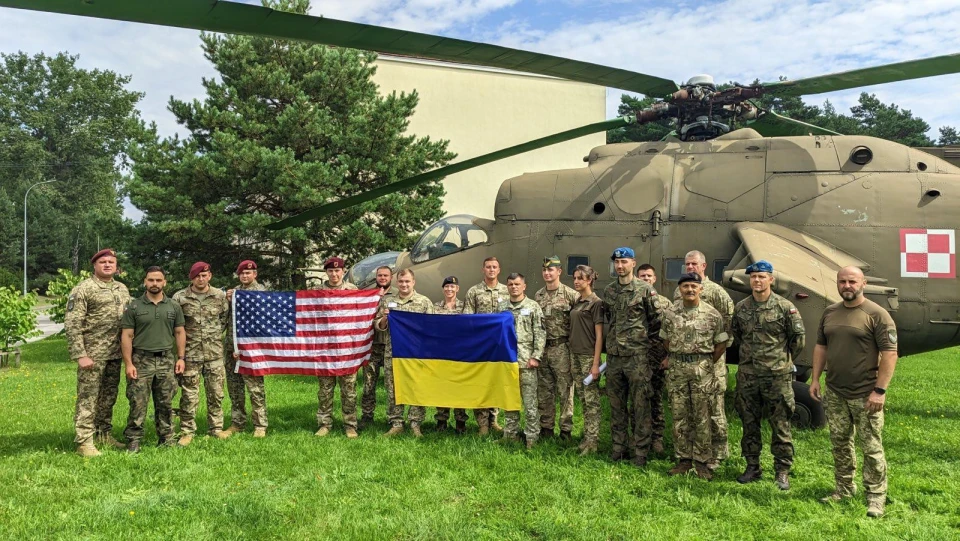
Photo: Ukrainian Armed Forces General Staff
The American military, the largest and most powerful in NATO, is deployed across allied nations. Consequently, US instructors are based in Europe, enabling most Ukrainian soldiers to train with them in European NATO member countries rather than in the USA. This spring, training took place in about 26 countries where American forces assisted Ukrainian military personnel.
The United States has numerous military bases abroad, including several in Germany. American instructors utilize these bases to train Ukrainian soldiers. In early 2023, Pentagon spokesperson Brigadier General Pat Ryder stated that the US could train around 500 soldiers per month in Germany.
From the start of the full-scale war until this summer, the United States reportedly trained over 11,000 Ukrainians. Training covered fundamental skills such as weapon handling, equipment repair, and combat operations. By November, around 18,000 Ukrainian military personnel had undergone training, with most trained in Germany. Approximately 1,000 more were reported to be currently undergoing training.
Moreover, it involves gaining expertise in the latest weaponry. For instance, the initial batch of Ukrainian soldiers, who became proficient in Patriot air defense systems earlier this year, underwent fundamental training in the United States.
"In March, Brigadier General Pat Ryder from the Pentagon reported, '65 sky defenders from Ukraine have completed Patriot training at Fort Sill, Oklahoma, and have now returned to Europe.' Earlier, Brigadier General Shane Morgan, the commander of Fort Sill, acknowledged the impressive speed at which the Ukrainian military underwent training."
Additionally, as previously mentioned, during the summer, American trainers provided instruction to hundreds of Ukrainian soldiers in the operation of Abrams tanks on German training grounds.
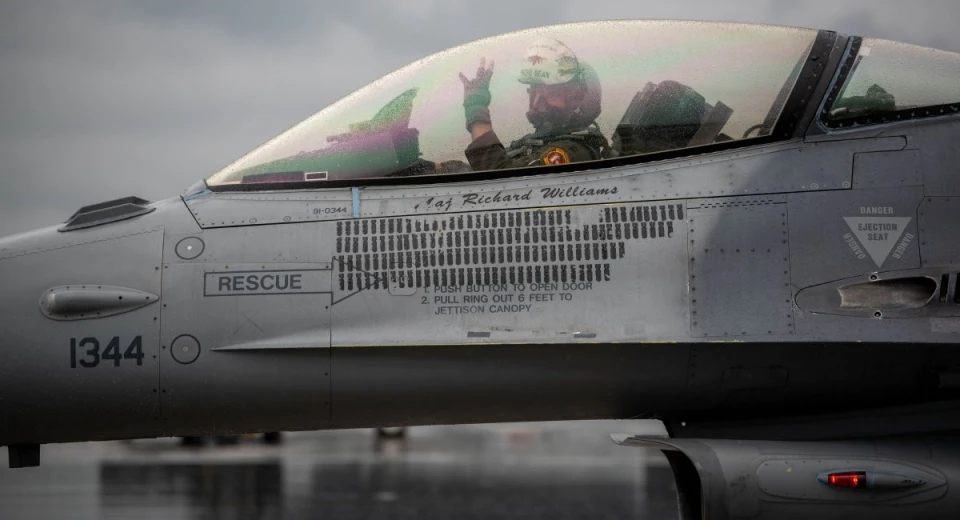
Photo: F-16 US Department of Defense
Since the beginning of this fall, the training of Ukrainian pilots mastering F-16 aircraft by Americans has gained significance. Ukrainian pilots have commenced F-16 flight training at an air base in Arizona, as reported by the US Air Force in late October. A standard F-16 training program typically spans six months, but in the Ukrainian context, this duration can be shortened.
Moreover, European nations are contributing to pilot training. Notably, training centers in Denmark and Romania are actively involved. The European F-16 Training Center is situated at a Romanian military air base near Feteşti in the southeast of the country, utilizing F-16 aircraft provided by the Netherlands for training. In Denmark, the training of Ukrainian pilots began even earlier, at the end of August. Denmark's armed forces reported that eight aces and 65 aircraft maintenance trainees have initiated training at the Danish military air base in Skrydstrup.
In summary, it's crucial to reiterate that the training of Ukrainian servicemen abroad is a vital component for Ukraine's success. The ongoing full-scale war, approaching its two-year mark, underscores the importance of coordinated actions and providing mobilized individuals with a comprehensive understanding of military affairs before entering battle. Additionally, training has been adjusted to the real situation on the Ukrainian battlefield, ensuring that our soldiers not only undergo the NATO young fighter course but also prepare for a new type of warfare previously unseen globally.
- News











































